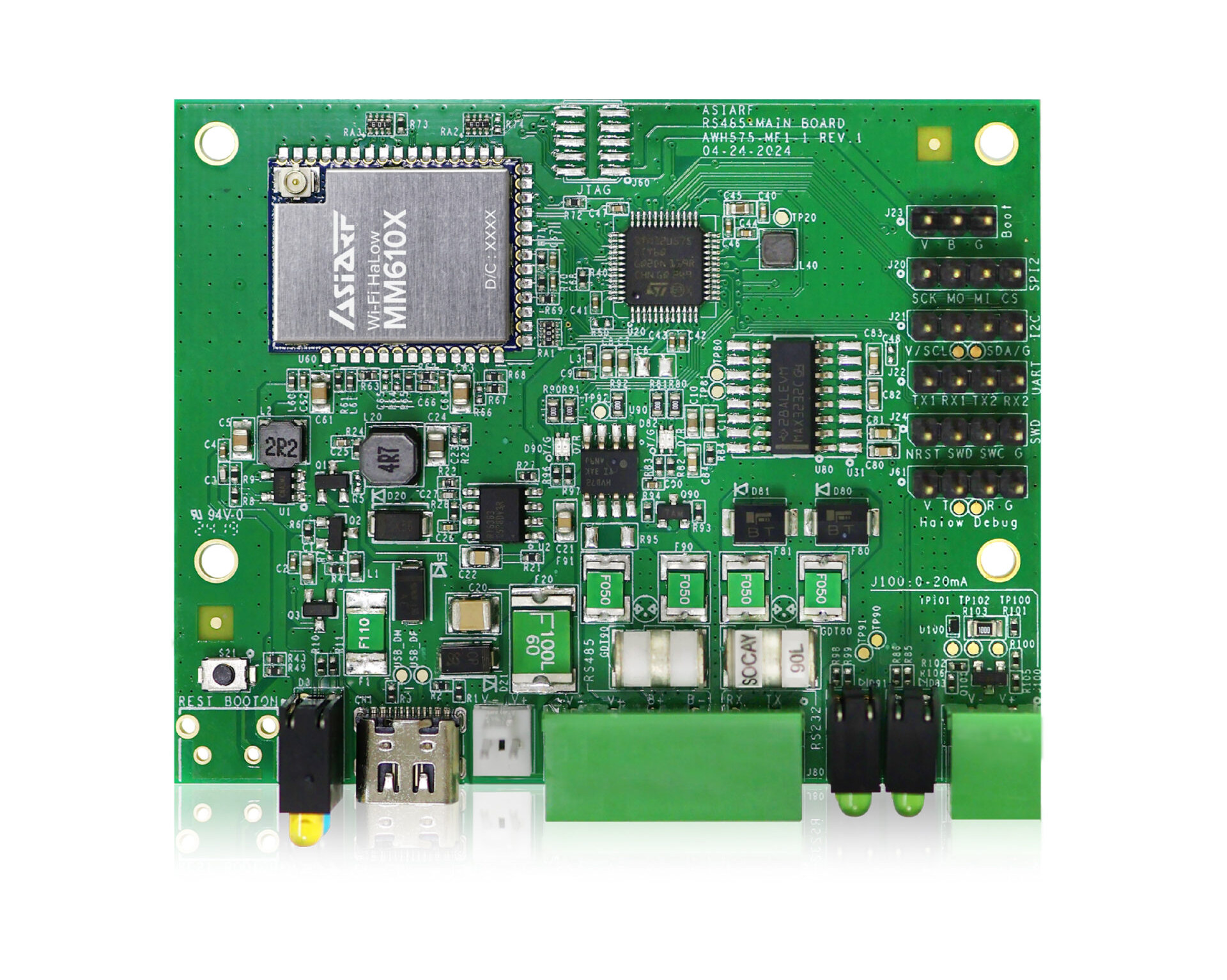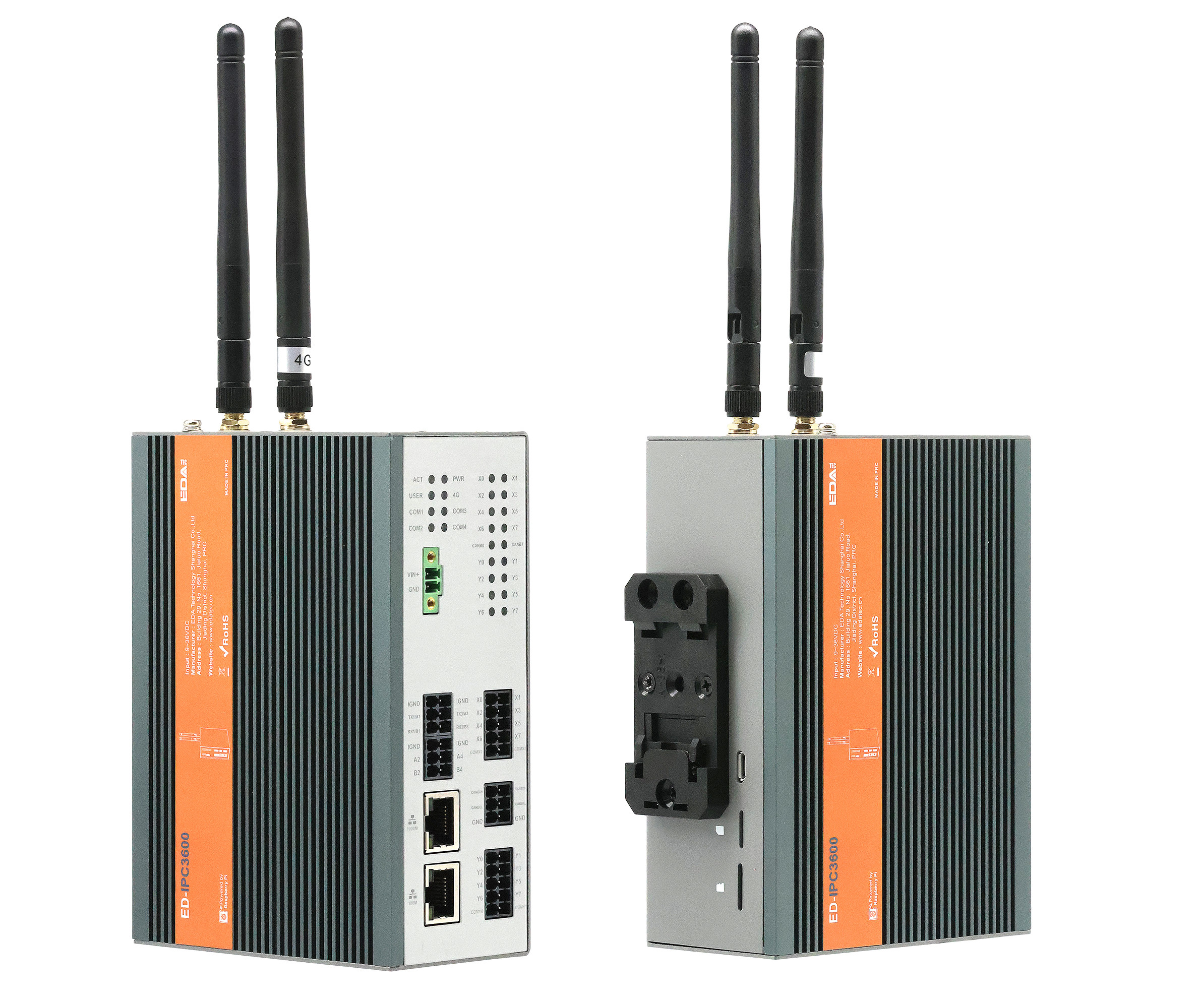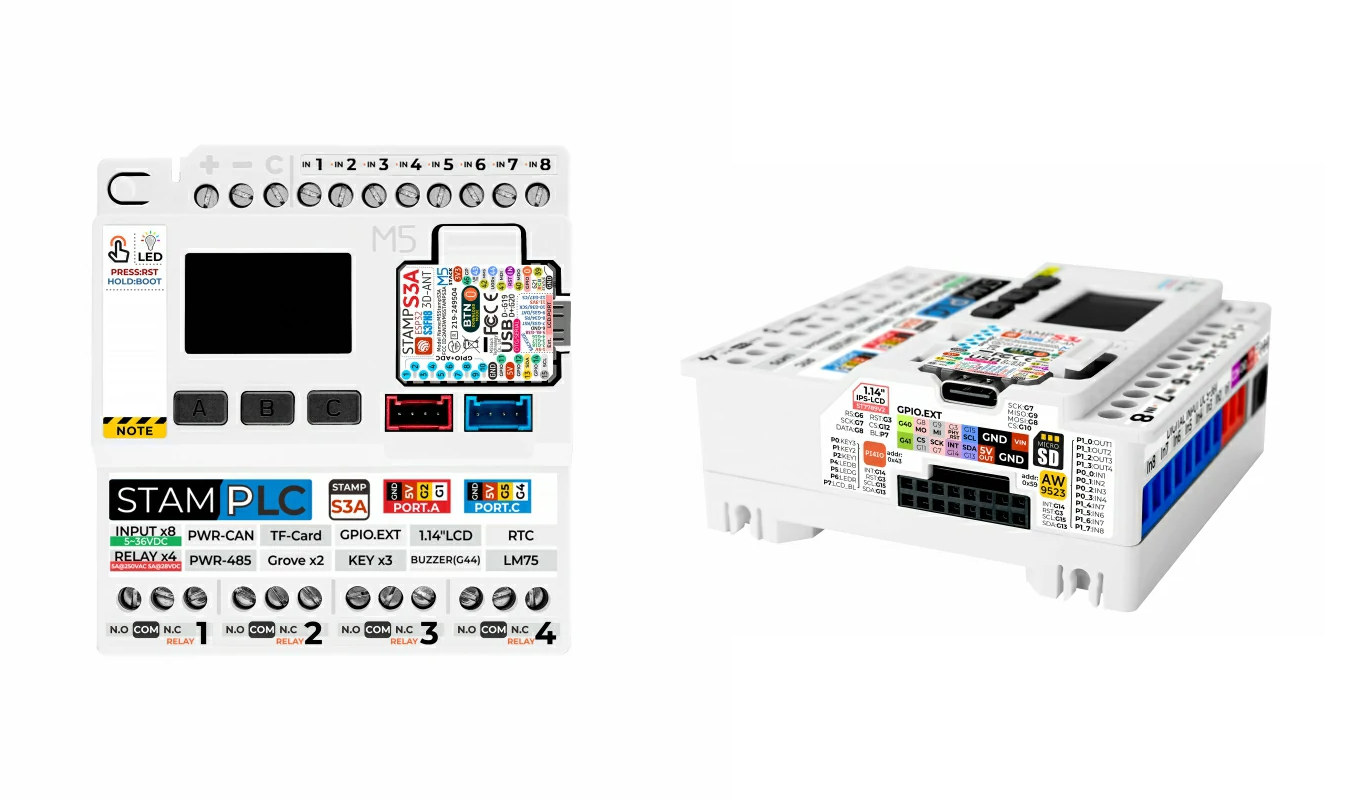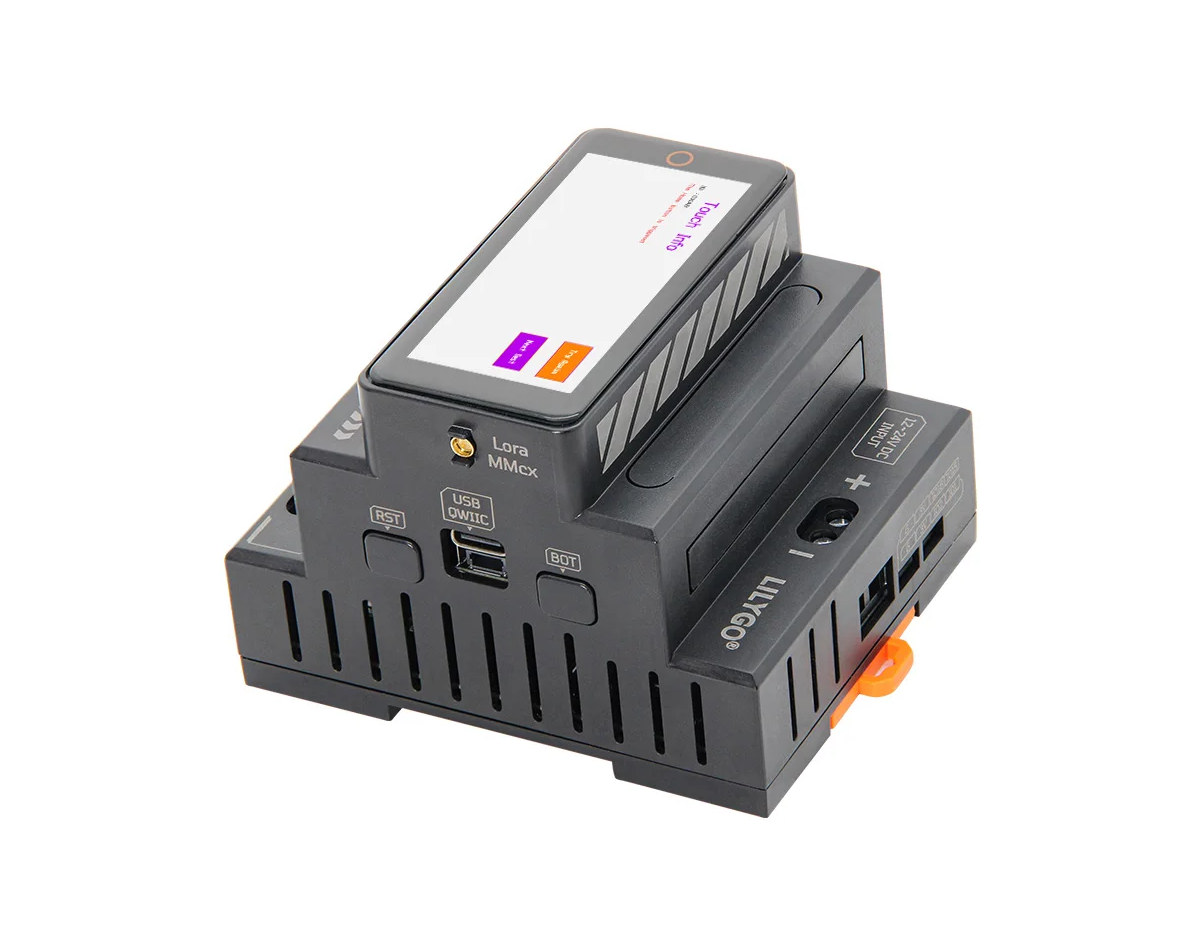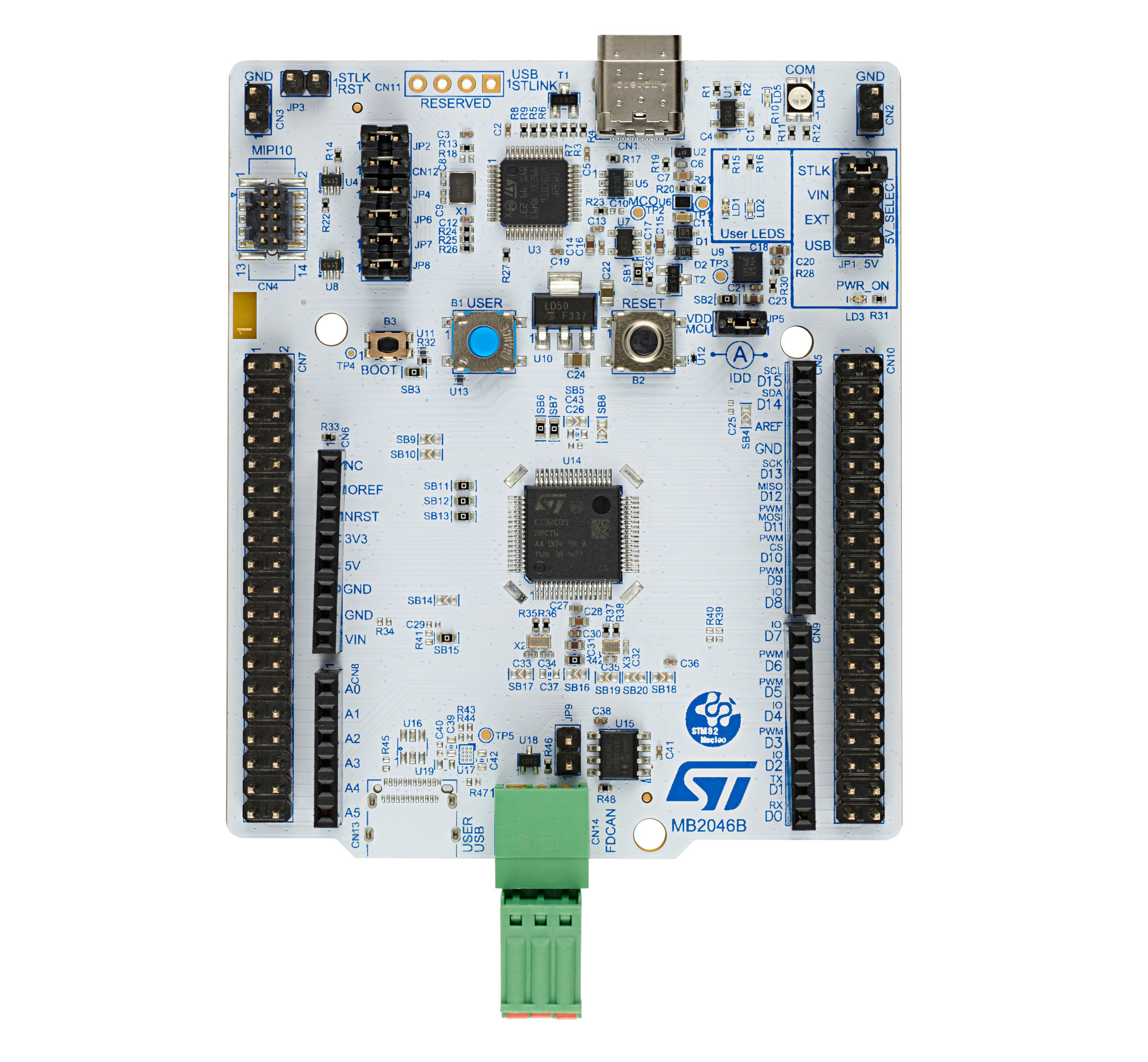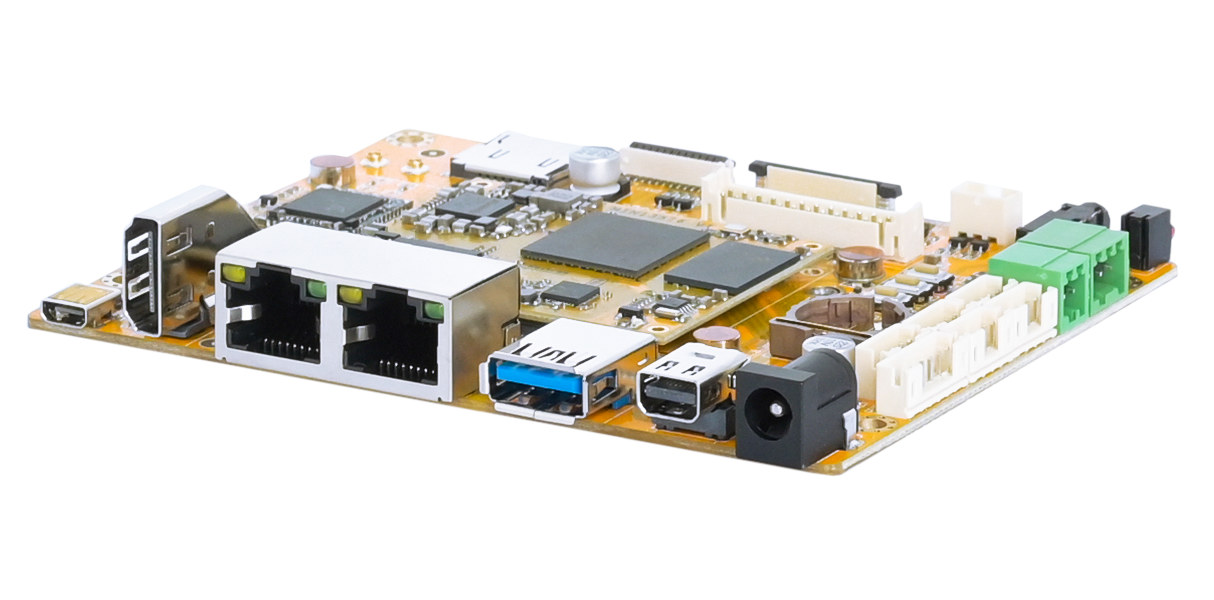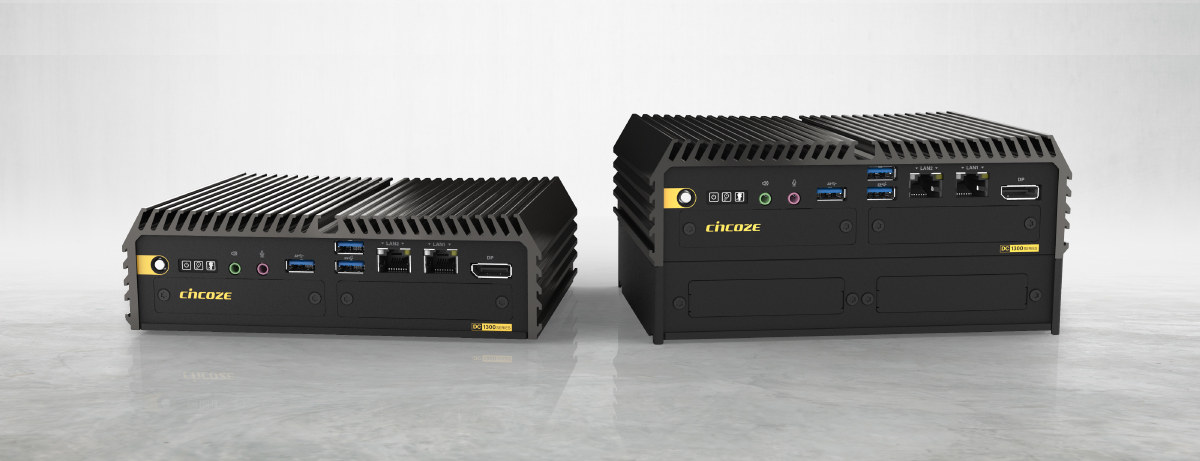AsiaRF AWH575-MF1 is a WiFi HaLow industrial IoT controller / remote control kit with RS232, RS485, I2C, SPI, UART, and 12-bit ADC interfaces to connect sensors or actuators and designed for long-range, low-power M2M communication. The board is comprised of an STMicro STM32U5 Cortex-M33 microcontroller to handle I/Os and communicate with an MM6108 WiFi HaLow (802.11ah) module made by AsiaRF. The board takes power from a USB-C port or optionally from a terminal block supporting a wider 9V to 24V DC input. AsiaRF AWH575-MF1 specifications: MCU – STMicro STM32U585CIT6Q CPU – Arm Cortex-M33 core @ 160 MHz Memory – 786 KB SRAM Storage – 2MB Flash Wi-Fi HaLow AsiaRF 802.11ah module based on Morse Micro MM6108 chipset Frequency Range – 902MHz to 928MHz Channel bandwidth – 1/2/4/8MHz Data Rate – Single-stream max data rate of 10 Mbps Transmit Power – 21dBm +/-2dBm @ MCS 0 Modulation – BPSK/QPSK/16 QAM/64 QAM […]
EDATEC ED-IPC3630 Raspberry Pi CM5-powered industrial PC gets eight DI, eight DO, and two CAN Bus
EDATEC ED-IPC3630 is an industrial PC (IPC) built around the Raspberry Pi Compute Module 5 (CM5) with up to 8GB RAM and designed for industrial automation, IoT, and control applications with features like a wide 9V to 36V DC power input and a DIN-rail mount. The industrial computer also offers dual GbE, optional WiFi 5 and/or 4G LTE cellular connectivity, HDMI video output, a few USB ports, eight digital inputs (DI), eight digital outputs (DO), and two CAN Bus interfaces. ED-IPC3630 Specifications: SoM – Raspberry Pi CM5 SoC – Broadcom BCM2712 quad-core Cortex-A76 processor @ 2.4GHz with VideoCore VII GPU System Memory – 2GB, 4GB, or 8GB LPDDR4-4267 SDRAM (the 16GB model is not offered, maybe due to supply issues) Storage – Options for 16GB, 32GB, or 64GB eMMC flash Wireless – Optional dual-band WiFi 5 and Bluetooth LE 5.0 module Storage M.2 Key-B socket optionally fitted with 128GB, 256GB, […]
M5Stack StamPLC – An ESP32-S3-based PLC with opto-isolated inputs, relay ouputs, RS485, CAN Bus, and more
“M5Stamp PLC Controller with M5StampS3” or just “M5Stack StamPLC” is a programmable logic controller (PLC) based on the StampS3A ESP32-S3 wireless module and offering 8 opto-isolated digital inputs, 4 relay outputs supporting both AC and DC loads, plus RS485 and CAN Bus interfaces. The DIN Rail IoT controller also features a 1.14-inch color display, a RESET/BOOT button, 3 user buttons, and a buzzer or user interaction. The M5Stack StamPLC also integrates an LM75 temperature sensor and an INA226 voltage/current sensor, as well as a microSD card slot for data storage, and it can take a wide voltage input between 6 and 36V DC. M5Stack StamPLC specfications: Control Module – StampS3A (similar to M5Stamp S3) SoC – Espressif Systems ESP32-S3FN8 CPU – Dual-core 32-bit Xtensa LX7 microcontroller with AI vector instructions up to 240MHz, RISC-V ULP co-processor Memory – 512KB SRAM Storage- 8MB flash Wireless – 2.4GHz WiFi 4 (802.11b/g/n), Bluetooth […]
LILYGO T-Connect Pro industrial IoT controller offers Ethernet, WiFi, Bluetooth, LoRa, RS232, RS485, and CAN Bus
LILYGO T-Connect Pro is a DIN rail-mountable, ESP32-S3-based industrial IoT controller with Ethernet, WiFi 4, Bluetooth 5.0 LE, and LoRa connectivity, as well as CAN Bus, RS232, and RS485 interfaces. The controller also features a 2.33-inch touchscreen display, a 10A relay, a 12V to 24V DC screw terminal for power, 5V USB-C port for programming, a Qwiic connector for expansion, and BOOT and Reset buttons. LILYGO T-Connect Pro specifications: SoC – Espressif ESP32-S3R8 CPU – Dual-core Tensilica LX7 microcontroller up to 240 MHz with vector instructions for AI acceleration Memory – 8MB PSRAM Wireless – WiFi 4 and Bluetooth 5.0 LE + Mesh connectivity Storage – 16MB SPI flash Display – 2.33-inch RGB display with 480×222 resolution via ST7796 SPI display controller with touchscreen using CST226SE chip Networking 10/100Mbps Ethernet RJ45 port via W5500 4-wire SPI controller WiFi 4 and Bluetooth 5.0 LE via ESP32-S3 LoRa via HPD16A Semtech SX1262 […]
STMicro expands the STM32C0 Cortex-M0+ MCU family with STM32C051, STM32C091, and STM32C092 (with CAN FD)
STMicro first introduced the STM32C0 32-bit Arm Cortex-M0+ MCU family as an 8-bit MCU killer in 2023, followed by the STM32C071 adding USB FS and designed for appliances with graphical user interfaces (GUI). The company has now added three new parts with the STM32C051, STM32C091, and STM32C092. The STM32C051 is similar to the original STM32C031 but adds more storage (64KB vs 32KB) and is offered in packages with up to 48 pins, while the STM32C09x parts offer flash densities up to 256 KB in packages up to 64 pins, and the STM32C092 also gains a CAN FD interface. The STM32C09x parts can be seen as an update to the STM32C071 where more flash memory is needed. That’s 30 new SKUs bringing the total to 55 when different packages and flash memory size/RAM size options are taken into account. The STM32C051 offers the same maximal amount of SRAM as the STM32C031 […]
Boardcon SBC3576 – A feature-rich Rockchip RK3576 SBC with HDMI, mini DP, dual GbE, WiFi 6, optional 5G/4G LTE module, and more
Boardcon SBC3576 is a feature-rich single board computer (SBC) based on the MINI3576 system-on-module powered by a Rockchip RK3576 AI SoC and equipped with two 100-pin and one 44-pin board-to-board connectors for interfacing with the carrier board. The carrier board is equipped with up to 8GB RAM, 128GB eMMC flash, two gigabit Ethernet ports, a WiFi 6 and Bluetooth 5.3 module, 4K-capable HDMI 2.1 and mini DP video outputs, a mini HDMI input port, a USB 3.0 Type-A port, RS485 and CAN Bus terminal block, and more. The Rockchip RK3576 SoC comes with the same 6 TOPS NPU found in the Rockchip RK3588/RK3588S SoC and can be used as a lower-cost alternative with less performance. Boardcon SBC3576 specifications: SoC – Rockchip RK3576 CPU 4x Cortex-A72 cores at 2.2GHz, four Cortex-A53 cores at 1.8GHz Arm Cortex-M0 MCU at 400MHz GPU – ARM Mali-G52 MC3 GPU clocked at 1GHz with support for OpenGL […]
Chipsee introduces 7-inch and 10.1-inch industrial panel PCs powered by Raspberry Pi CM5
Chipsee has introduced three new panel PCs powered by the Raspberry Pi Compute Module 5 (CM5), namely the EPC-CM5-070, PPC-CM5-070, and PPC-CM5-101, designed for automation, manufacturing, and industrial applications. The EPC-CM5-070 is a compact 7-inch open frame embedded panel PC with armored glass, the PPC-CM5-070 is also a 7-inch panel PC but with VESA/panel mounting and a rugged metal enclosure, and the PPC-CM5-101 features a 10.1-inch touchscreen display and support for an extended temperature range. Chipsee EPC-CM5-070 – A 7-inch open frame panel PC Specifications: SoM – Raspberry Pi CM5 with Broadcom BCM2712 quad-core Cortex-A76 SoC, 4GB or 8GB RAM, 32GB eMMC flash Storage MicroSD card slot M.2 M-Key 2230/2242 (PCIe Gen2 x1) socket for NVMe SSD Display – 7-inch display with 1024×600 resolution, 5-point capacitive touchscreen, 500 NIT brightness Video Output – HDMI port Audio 3.5mm audio out jack Internal 2W Speaker Buzzer Camera – Optional support Networking Gigabit […]
Cincoze DC-1300 is a stackable embedded computer powered by Intel Processor N97 or Core i3-N305 Alder Lake-N SoC
Cincoze DC-1300 is an Intel Processor N97 or Core i3-N305 Alder Lake-N embedded computer designed for smart manufacturing that supports stackable expansion boxes (SEBs) that leverage the built-in dual M.2 B Key slots of the system to support various I/O, CAN Bus, and Fieldbus modules. The fanless rugged PC supports up to 16GB DDR5 and M.2 and 2.5-inch SATA storage (no NVMe SSD). It features DisplayPort video output, two 2.5GbE ports, four USB Type-A ports, 3.5mm microphone and line-out audio jacks, and two RS232/RS485 DB9 connectors, and additional display, networking, USB, or DIO interfaces can be added through three CMI module on the main unit and four MEC M.2 card through the optional SEB. Designed for industrial applications, the system supports a wide 9 to 48V DC input and up to -40°C to 70°C temperature range without throttling under load. Cincoze DC-1300 specifications: Alder Lake N-series SoC (one or the […]


